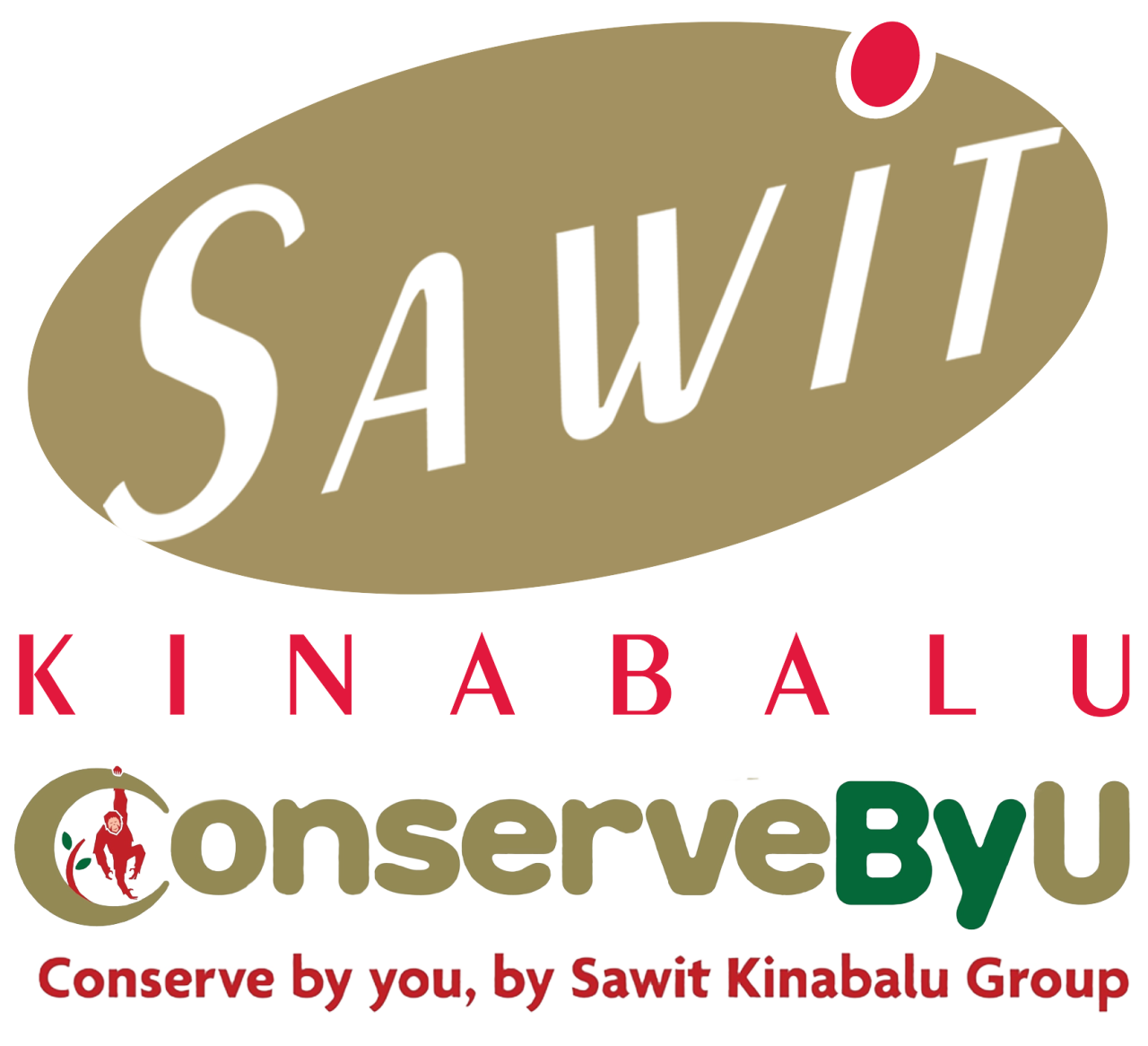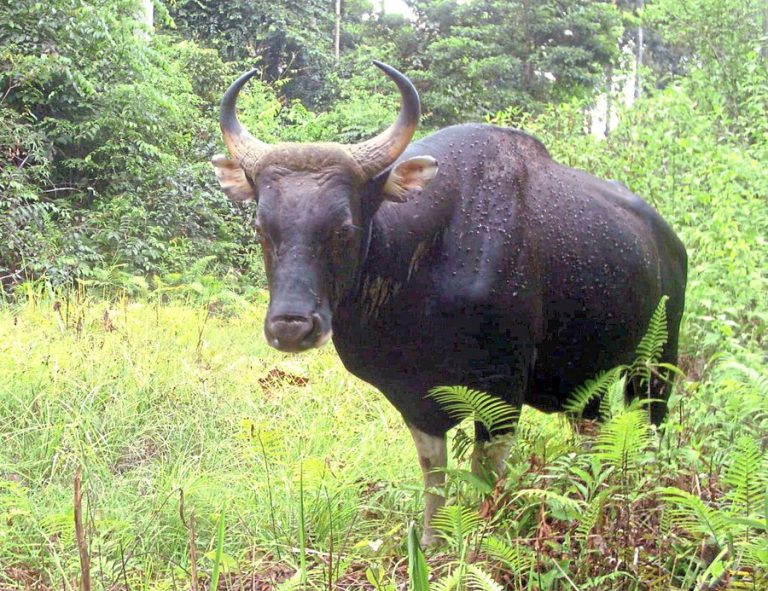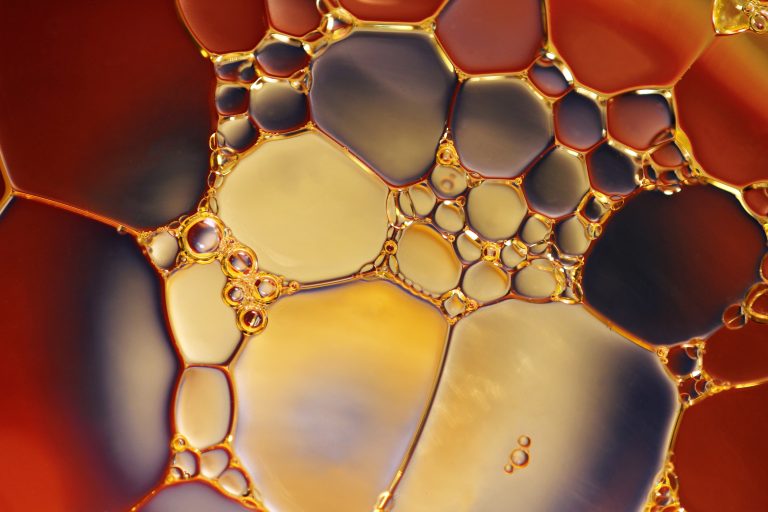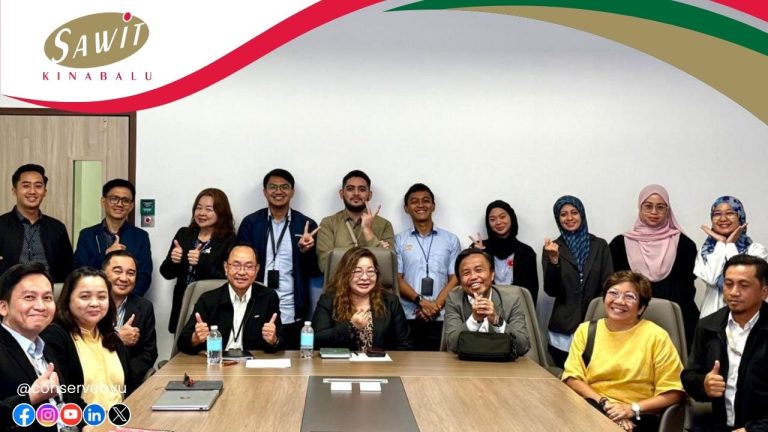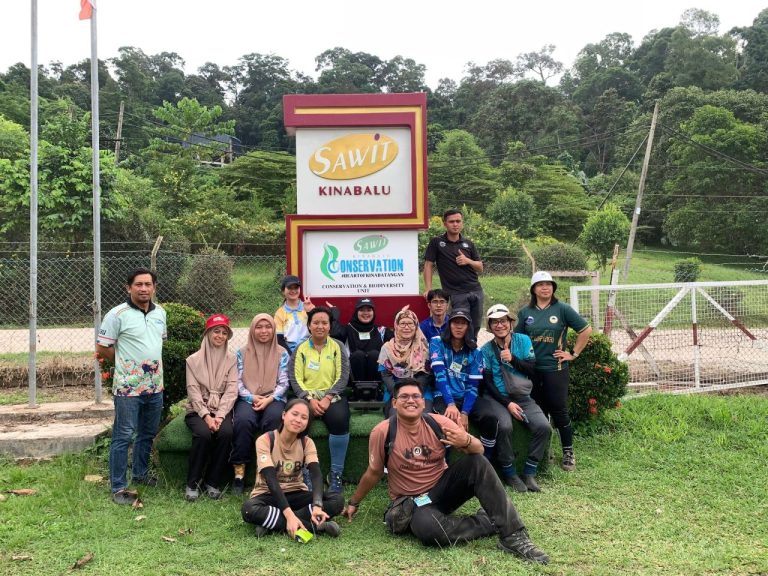By: Kan Yaw Chong
Daily Express
20 September 2020
Sawit Kinabalu is the first-ever oil palm company in Sabah that invested in an Orangutan bridge which quickly returned a big success, Orangutan researcher Dr Felicity Oram confirmed.
Built on Oct 21- 23, 2019 with the help of experts from Hutan – a key partner of Pongo Alliance with vast experience on such bridges since 2004 – the faster-than-expected results surprised them all.
Just 26 days after being set up, the bridge over Sungai Pin recorded the first of five crossings within eight months.
But it was on June 23 this year that a video camera trap captured the best and most amazing bridge walk of a newly-flanged male!
Top dog message – Born free
So what is the top-dog message that Dr Felicity and Sawit are trying to strike home to plantations, businesses, NGOs, the people of Sabah and politicians in the established powers? Born free – as free as the wind blows! Return to the male orangutans of Kinabatangan their once unfettered freedom to travel far and wide across the entire floodplain landscape. Remember history, Felicity reminded everybody.
Only 700 left
The orangutan population of Kinabatangan now counts only 700 or just 10pc of what it used to be, she noted. That means their count once stood at 7,000 – what a population crash actually. “The important thing is when you have a population only 700 or so left that’s about 10pc of what we used to have. Every single individual becomes very important, so even if one orangutan crosses once every three years it is still very important,” Dr Felicity said. Any further decline without open supportive intervention on connectivity restoration at the big landscape level may doom them, however much she likes zeal and optimism. “I am not talking about tomorrow,” she said.
Reason for ecstasy
But five crossings in eight months at Sungai Pin? No wonder there was such excitement at Sawit. “She (Dr Felicity) has built many bridges but it’s in Sawit Kinabalu that actually has results that you didn’t expect to happen so early so soon,” exuded Philipa Mojilis, Manager, Corporate Communication Unit. Felicity conceded she had her past dis- appointments: “We didn’t have camera traps on every single bridge so we don’t have this kind of commitment like Sawit to monitor every single bridge either. “But I only know one time I put a camera trap on a bridge at the Menanggol River in Sukau. I waited three years and still, I didn’t get one image but this one surprised me – just taking 26 days!”
Forces behind quick success
So what explains this extraordinary success at Sungai Pin? What you know and where you put the bridge counts, she said. “First of all we looked at the pattern of nests and we could see orangutans were trapped on one side of the river, they couldn’t cross,” she said, “Then we noticed there were quite a number of nests around, that’s an indication that males are coming to that area and say: ‘I would like to cross but I can’t,” Felicity guessed what the ape might be thinking.
Pattern of nests and sighting
“So where there are clumps of nests (this writer saw three clumps atop a 50ft tall tree just 10 metres from the river bank) we think that might be where they are choosing a place to cross. “Besides looking at the pattern of nests, we also set up a WhatsApp group within the plantation to report sightings so that we had an idea of where the Orangutans were being seen and quite early on it appeared that the Orangutan would like to cross that Sungai Pin at Bukit Durian but could not.”
When ficus trees are Orangutan restaurants
Next, we tried to look for trees that an orang- utan would look on the other side of the bank and say: ‘I would like to be over there’ – like the ficus (fig) tree you saw (yes, a towering tree with a mighty trunk),” Dr Felicity explained. “Ficus trees are really social – they are like restaurants to orangutans,” she noted. “Orangutans like to congregate actually on ficus trees – the only place where more than one fam- ily will eat in the same tree,” she said. “So, we try to choose tress that they are going to use – places where they want to cross, to make them feel more secure.” “Next, we try to pick a place where it is the shortest span because orangutans can’t swim so they have quite a lot of fear of being over water so we try to choose places where it’s not a big span,” Dr Felicity elaborated. On the other hand, however, as important as ficus is to orangutans, it is a misconception that they eat only fruits, Dr Felicity said.
Figs first but…
“It’s true that orangutan eat mostly fruits as 60pc of their diet is fruits so if they are across at Bukit Durian and there is a ficus tree with fruits in it they are going to eat that first.” But the thing is every day about 25% of their diet is leaves because that’s where their protein comes from.” “So the idea that they only eat fruits is not correct and the idea that they only eat ficus is also not correct either,” she said. “Because they eat many, many species, they can’t have a mono species forest, they are big animals,” Dr Felicity noted, citing Bukit Durian, from where the bridge has been pulled across to the other side of Sungai Pin.
Small pockets of forests matter
“That’s one thing about these small patches of forests like Bukit Durian in a plantation that have been left behind where evidently a female with an infant is living. “The June 23 video actually captured the maturing male crossing to Bukit Durian where the female and baby live. “It may be degraded forests but they are very diverse and that’s very important,” Felicity stressed. But Dr Felicity attributed everything about the rapid success of the bridge to collaboration – working closely together be- tween the experience and expertise of conservation practitioners from Pongo Alliance partners with particularly the genuine interest, commitment and leadership throughout the ranks of Sawit Kinabalu.
Felicity’s pleasant shock
She cited the day when she gave a presentation to Victor Ationg – Sawit Kinabalu’s Head of Plantation Business, to spend money on the project. “I was very nervous and he just very quickly said, ‘OK wah’, and that was my big shock because I was telling him we may not see orangutans on this bridge. I said we are doing this in good faith, we don’t know, we may have no evidence. “When we started this project we had no idea that we would find as many orangutans still living in the landscape. So I was very impressed,” she recalled the decisive day. Philipa Mojilis – Manager of Sawit’s Corporate Communication Unit, agreed it was about trust and faith. “Actually we left the outcome to the experts so what the experts said we believed.” On hindsight, the results had validated Sawit’s faith on Felicity and her associates in Hutan.
Sawit’s new thrust and direction did it: Manager Philipa underscored the emerging direction of the company that led to this day. “Others may not like it but we in Sawit Kinabalu we are in that sort of commitment being a Sabah Government wholly owned company,” she said. “We are singing the same tunes now, it has to come from the direction of the management, the leadership, it has to be the leadership. We are committed, we try Pongo Alliance to be our partner in that manner, it’s good that the results are now showing which is a tremendous experience,” she said during the field trip to Sungai Pin on 4 September.
Correcting past mistakes
“We are honoured, we are proud. This is what Sawit Kinabalu is doing, we have made mistakes in the past, we are trying to correct them by getting Pongo Alliance to work with us. “Way back 2003, we worked with WWF on reforestation of Sungai Pin because we didn’t know then we were not supposed to plant oil palm in that flood prone area,” she pointed out. “Before that, we didn’t have this interest, now we have established Sungai Pin Conservation Area but not just Sungai Pin, we want to make every staff to have this realisation to become more environment friendly, care more about the environment and become friends of wildlife, I think slowly this will become the culture, ” she said.
Foregoing millions
“I always remember what our MD ( Masri Pudin) has said : No one wants to put aside thousands of hectares ( total 8,661 hectares of which 2,632ha occupy Sungai Pin) which put in dollars would mean millions.” Dr Felicity agrees: “This is a realisation that it doesn’t have to be one way or the other, that you can have a better environment that is beneficial to the people more. “You are also creating jobs but also habitats that are not only good for wildlife but also for people as well, that awareness that you are part of the environment.” Well, Philipa has said it: It’s getting Pongo Alliance to work with Sawit which has produced the quick results and uplifting experience. Pongo Alliance is an alliance of some 15 partners comprising oil palm growers such as Sawit Kinabalu, businesses and conservation practitioners to promote human- orangutan co-existence landscape in Kinabatangan.
A telling impact of impact of Pongo Alliance’s skill sets Dr Felicity, who is Pongo Alliance Kinabatangan Project Director, explains how its skill sets have produced results in the Sawit case. “The idea of alliance is that word alliance that you bring in all the skill sets. Datuk Dr John Payne is the Executive Director who has a long history from the 1970s and Hutan has been working in this land- scape for 24 years and then we have the various oil palm companies, both national and Sabahan companies. “So we are in this particular project the beneficiaries of all that work before. So it’s an accumulation of many people’s work to do this project here,” she said. “For example, when we actually built the bridge together with our colleagues from Hutan, they are really experienced in put- ting up things high and doing the technical climbing. “So it’s Pongo Alliance partner Hutan which works a lot here in collaboration with Sawit Kinabalu. And we have been training Sawit workers to ensure they follow the SOP and climbing to install camera traps,” she said. “Team Hutan brought their experience in working continuously on improving bridges and making them so that they don’t kill the tress. “They had become quite good at the type of places where we want to put bridges and so that’s a lot of expertise that I have been working to develop with Hutan over time but what worked out very quickly is Sawit Kinabalu was open to building the bridge.”
Working together is still the key
“So the real key is it’s the all the collaboration,” she repeated her belief. “We had the experience as conservation practitioners restoring connectivity in our areas. “We are always making the design better, such as the use of lighter materials which makes the bridge lighter and easier to put up and also it put less pressure on the tress so that we are not sacrificing the trees by the weight of the bridge,” she explained. “Among the new innovations include experimenting with climbing knots which my retired engineer husband Ken came up with because he is a climber so he does have a big role.” “When you are building a bridge, you always wonder whether the orangutans would use it the way you think. “But, yes, it was how I hoped most for because he was putting his feet on the knots so he was going from know to knot. I think that makes it so it doesn’t swing as much,” Dr Felicity concluded the success story.
